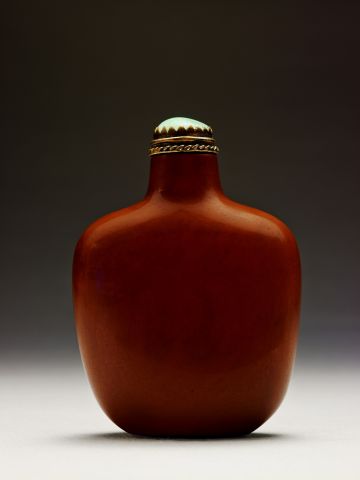
Bottle ID: 705
CHERT
Date: 1850-1900
Height: 71 mm
Chert, well-hollowed, of irregular, flattened, squared form, with shoulders sloping to a cylindrical neck and tapering to a flat oval foot, the body of a rich russet-brown color.
Similar Examples:
Stevens, Bob C. The Collectors' Book of Snuff Bottles, 1976, p. 169, no. 625
Hall, Robert. Chinese Snuff Bottles III, 1990, p.132, no. 77
Provenance:
Sotheby's Hong Kong, November 24th, 2014, lot 83
The Collection of Mary and George Bloch
Chinese Porcelain Co., New York, 1992
Collection of Mrs. John Sheafe Douglas (no. 598)
Exhibited:
Chinese Porcelain Company, New York, 1992
Published:
Chinese Snuff Bottles and Jade Carvings from the Douglas, Gnam and other collections, Chinese Porcelain Company, New York, 1992, pp. 42-43, no. 58.
Hugh Moss, Victor Graham and Ka Bo Tsang, A Treasury of Chinese Snuff Bottles. The Mary and George Bloch Collection, Volume 2, Hong Kong, 1998, pp.81-82, no. 210, The Sheafe Douglas Chert.
Chert is a common enough material which has been in use since pre-historic times for tools and for fire-lighting as it is also known as flint. It is part of the quartz group and is a fine-grained micro-fibrous sedimentary rock, varying in color from white to black, although it is usually found in tones of gray or brown or a rusty-red color.This bottle was previously identified as albite, but is catalogued, with reservations, as chert by the authors of 'Treasury', the catalogue of the Bloch Collection (see below). Without removing a sizeable amount of the material from the bottle for testing, a postive attribution cannot be made, but whatever the material, it clearly fits within the quartz group. There are two similar bottles known, in slightly different color tones, all of larger size and slightly irregular shape, like this example, leading to the conclusion that they were likely made in the same workshop. Interestingly, this bottle functions as a touchstone, so-called because of its ability to allow a test for gold or silver by rubbing the metal on the stone. The color of the resulting streak of metal on the bottle is an indicator of its quality to the informed.
< Back to full list
 English
English 中文
中文